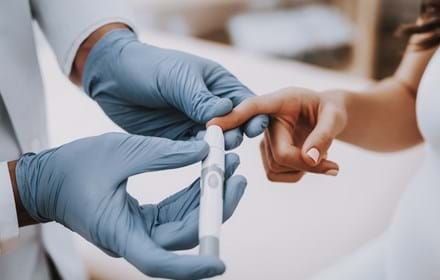
Pancreatic islet cells created from stem cells potential type 1 diabetes breakthrough
New treatments for type 1 diabetes could result from study into how environment of cells influences their destiny.
A breakthrough by researchers in Germany could lead to new treatments for type 1 diabetes with the possibility of manufacturing pancreatic islet cells from stem cells.
Scientists at the Helmholtz Centre Munich discovered signals that provided clues to the fate of immature cells in the pancreas.
Their findings, recently published in Nature, showed that the cells are very mobile and that their destiny is strongly influenced by their immediate environment.
Type 1 diabetes is an autoimmune condition where the pancreas fails to produce insulin and insulin injections are required for life.
Professor Dr Henrik Semb, Director of the Institute of Translational Stem Cell Research at Helmholtz Centre Munich, and Professor and Executive Director of the Novo Nordisk Foundation Center for Stem Cell Biology (DanStem) at the University of Copenhagen, said: “We have now been able to map the signal that determines whether pancreatic progenitor cells will become endocrine, such as insulin-producing beta cells or duct cells.
“The cells are analogous to pinballs, whose ultimate score is based on the sum of pin encounters. They are constantly moving around within the developing pancreas, leading to frequent environmental changes. We show that the exposure to specific extracellular matrix components determines the ultimate destiny of the cells.”
The new discovery could lead to insulin-producing beta cells being more cost-effectively and robustly produced from human stem cells for future treatments against type 1 diabetes.
Professor Semb said: “Our discovery breaks new ground because it explains how multipotent progenitor cells mature into different cell types during organ formation.
“It also gives us the tools to recreate the processes in the laboratory, to more precisely engineer cells that are lost or damaged in severe diseases, such as type 1 diabetes and neurodegenerative diseases, for future cell replacement therapies.”
He added: “Perhaps the most astonishing achievement is that our data answer an enigma that has puzzled the field for decades. How some progenitors mature into duct cells, whereas others become endocrine cells via Notch signals.”
DRWF Research Manager Dr Eleanor Kennedy said: “This is potentially a very interesting piece of research from an internationally recognised group. Yes, we know that stem cells have the potential to cure a number of different diseases including type 1 diabetes but knowing more about how the fate of these cells is determined is an important step forward.”
Adding a note of caution, Dr Kennedy said: “Stem cells have been the target of so much research over the past few years and, whilst a lot of fabulous work has been done, to date very little has been translated into actual treatments. This remains a grey area and one that I very much hope will start to change as we work out if this research can be duplicated and how the safety and efficacy profiles of any stem cell therapies moving forward can be monitored.”
Read the report in Nature
Find out more about type 1 diabetes
Support DRWF by making a donation here
Find out more about DRWF-funded research here
Find out more about DRWF fundraising here
For latest update follow DRWF on Facebook, Instagram and Twitter
To receive the charity’s latest bulletins as they become available, please sign up here
Read DRWF diabetes information leaflets here
Join the Diabetes Wellness Network here
I would like to make a regular donation of
I would like to make a single donation of
There are lots of ways to raise money to support
people living with all forms of diabetes.
Bake, Swim, Cycle, Fly ... Do It For DRWF!
Fundraise with us
Recent News


